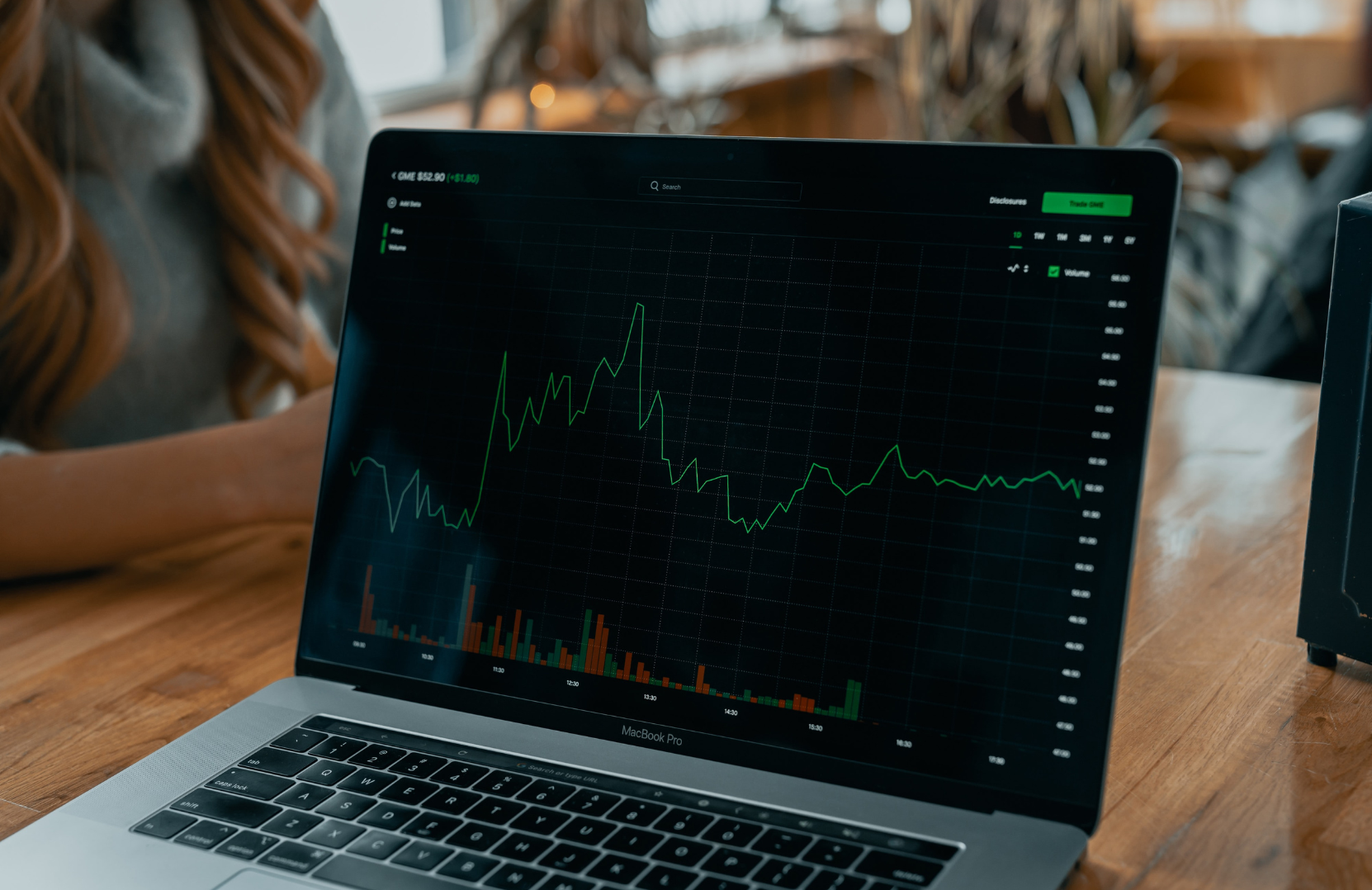Money, money, money. Does it really grow on trees? In Canada, the root of all currency is the Bank of Canada (BoC), whose main role as defined by the Bank of Canada Act, is to “regulate credit and currency in the best interests of the economic life of the nation,” among other things a central bank is supposed to do. Long story short, the Bank of Canada prints our money and controls the flow of it.
The way the BoC does that is not through lawmaking, like how politicians enact changes, but through monetary policy, which aims to let our currency float and keep inflation low, and is implemented through changes in interest rates and currency printing. Currency float, or flexible exchange rate, refers to the Bank of Canada letting markets control how much the Canadian dollar is worth, which is based on the demand for Canadian goods and services, as well as our interest and inflation rates.
OK, SO THEY CAN CHANGE INTEREST RATES. WHO CARES?
Interest rates dictate a lot of everything in the economy. The Bank of Canada sets a key policy rate, also called an overnight rate, which is the interest rate at which financial institutions lend and borrow short-term loans between themselves. This rate is what the banks (not the BoC) pay, so think of this as their bottom line. When the key policy rate goes up, banks are incentivized to increase the interest rates in their loans. That includes mortgages, car loans, lines of credit, et cetera.
Higher interest rates mean less benefit for the borrower, hypothetically resulting in less spending, less investments, less growth. This is the Bank of Canada’s way of saying “stop spending, save your money. And if you own a business, stop charging so much while you’re at it.” A cooling of the economy.
HERE’S A QUESTION: ARE WE GOOD?
It’s no secret that Alberta’s economy, and economies around the world, have been fluctuating since the pandemic. Alberta’s consumer price index (CPI), which is a measure of inflation, sat at 6.8 per cent at the end of 2022, already a two per cent increase from the start of the year, and miles ahead of the 1.2 per cent rate in January 2019. Interest rates continue to be high, sitting at 3.75 per cent in November, after the Bank of Canada hiked interest rates for the sixth time in 2022. And the war in Ukraine has impacted supply chains and contributed to rising inflation.
While ATB notes in Alberta Economic Output that Alberta’s Gross Domestic Product (GDP) experienced growth in 2022 by about five per cent, this isn’t an indication of general well-being in the province.
“The economy is really becoming very unpredictable as the prices keep on increasing continuously and people are not able to afford what they were buying before,” says Dr. Sintayoh Geberegziabher, a sessional instructor of economics at MacEwan University. “This is affecting families, especially middle-income and low-income families because with the amount of income that they have, it’s becoming hard to meet even the basic necessities.”
“Our programs are up by about 20 per cent,” says Scarlet Bjornson, the communications specialist at the Bissell Centre, a non-profit organization that supports Edmonton’s low-income and houseless communities with the goal to end poverty.
Many of the people using the services at the Bissell Centre have never accessed their services before and never anticipated being in this situation. “A lot of people are embarrassed; we don’t want them to be embarrassed,” continues Bjornson. “This is not their fault.”
Bjornson explains that the gap between the middle class and poverty is getting smaller, making it much easier to fall into poverty. These economic challenges can be particularly hard on students.
“It’s incredibly hard to be a student… in general. But then also on top of that, needing to work almost a full-time job so you can make ends meet — there’s a real challenge there,” says Bjornson.
But first of all…
WHAT EVEN IS INFLATION?
It’s not when you blow up a balloon. Well, technically it is, but not when it pertains to the economy. In the economy, inflation refers to a lower buying power of your money and currency. Inflation is measured with CPI by comparing price changes of a hypothetical “shopping basket” of goods and services that Canadians typically purchase. For example, Statistics Canada finds their CPI by looking at the cost changes of food, shelter, clothing, transportation, and more.
“Inflation basically refers to the cost of living — the rate at which your cost of living goes up,” explains Dr. Junaid Bin Juhangir, associate professor of economics at MacEwan University.
So is inflation a bad thing? The Bank of Canada suggests that low, predictable inflation can benefit the economy, and the bank actually aims for an annual average inflation rate of two per cent. The main idea behind the two per cent goal is the predictability of it; if companies and individuals can anticipate their dollar being both stable and worth two per cent less year-over-year, then investing, spending, and saving behaviours can be planned for. Also, companies can grow and charge more each year, hypothetically creating new jobs. The key word here is stability.
The opposite of low inflation is high inflation, which means the opposite of stability.
SO, WHAT’S GOING ON HERE?
Currently, Geberegziabher says Alberta is experiencing cost-push inflation, which is when the supply chain is disrupted but the demand for goods and services stays the same or grows, despite rising costs. The result is higher prices for the same amount of products, or fewer.
The reasons for high inflation are even more complex than the concept itself. One of the primary causes of inflation right now, globally and locally, is the supply chain bottleneck that’s been happening since the start of the pandemic. Exports and imports across the world were interrupted due to the pandemic, resulting in less goods available to buyers. China’s zero COVID policy has been especially impactful on both shipping and manufacturing.
You may think that with less goods and everyone locking down in their homes that general spending would have gone down, but to everyone’s surprise, including big banks, demand for goods and services went way, way up.
“The idea behind it was that people should be tightening the purse strings,” says Jarrod Boyko, senior financial advisor for ATB. “And it was the opposite effect that happened. So spending actually accelerated during COVID up until the end of 2021. More houses being purchased, more large ticket items, trailers, all sorts of things, because the lending rates were so low, which then, with the supply chain issues, and other things (due to) COVID, the demand far outstrips the supply and then inflation runs away on you.”
“We’re in a state where we have to do something to bring inflation down,” he continues. “So you see a very aggressive acceleration of interest rates that will continue into probably next year. And probably stay high.”
At the beginning of 2020, the key policy rate in Canada dropped from 1.75 per cent to 0.25 per cent, anticipating a drop in spending due to pandemic related closures. It stayed at that percentage for nearly two years, until Mar. 1, 2022, when it was increased to 0.50 per cent. Since then until the time of writing, there have been six more increases — the rate currently sits at 4.25 per cent with eight dates set for a possible change in 2023.
One resource that has been impacted in a multitude of ways since 2020 is oil and gas. Most recently, the Russia-Ukraine war has largely impacted the fluctuations of oil and gas prices globally, indirectly trickling increased costs down to other products. For example, Geberegziabher explains that when farmers have to pay more for gas to fuel their farming vehicles and higher fuel costs when transporting food, the price of food subsequently increases.
In October 2022, food costs had risen 10.3 per cent since the same time in 2021.
The war in Ukraine has also meant that Ukraine hasn’t been able to export as much wheat, barley, and corn as they normally do, and this subsequent shortage in grains has also driven prices up.
But farming and food goods aren’t the only industries that have been affected. There isn’t one sector and industry in Alberta that hasn’t been affected by inflation, says Geberegziabher, from manufacturers to bakeries and restaurants.
Despite all these difficulties in the supply chain, many companies have been enjoying massive profit booms throughout 2020-2022 due to high demand and high prices. For example, Loblaws Companies Ltd., grocery and drugstore retailer, had a 30 per cent increase in profits in their third-quarter of 2022, according to reporting from The Canadian Press.
WHAT WEAPONS DO WE HAVE IN THE WAR AGAINST INFLATION?
As far as weapons go, the Bank of Canada wields a double-edged sword named contractionary monetary policy. For the Bank of Canada, that means raising the interest rates in the effort to reduce demand for products and drive prices down. Remember what we were saying about cooling the economy?
The logic is this: high interest rates will make loans less attractive to people and companies, leading them to spend less money (and incur less debt), which means companies will have to lower their high prices to attract business. This is something we’ve seen in Edmonton in the new home industry: low mortgage rates equalled higher prices and high mortgage rates resulted in price drops.
While increasing interest rates is an effective way of controlling inflation, and the Bank of Canada can do it (many of our sources have faith in the institution to do so), there is a cost to their direct approach.
If the intention is to lower the amount of loans taken out, small businesses aren’t going to leverage that money to expand or create new jobs, Juhangir says. He adds that if grocers are paying more for their products due to supply chain issues in addition to paying higher interest rates, prices may remain high out of necessity. Juhangir suggests that governments should provide relief for those who are vulnerable to financial insecurity.
“They must always look at the human cost of these policies. And the human cost is terrible. If poor people are not going to be able to afford food, then what?”
HIGH INFLATION SOUNDS BAD.
High inflation is bad for everyone, since it means everything costs more. Those who don’t have the means to weather the economic storm often get left behind and people suffer. At the same time, dramatic interest rate hikes may also drive prices up as vendors and financial institutions adjust and adapt.
The inflation of food costs directly hurts those who are more financially vulnerable, physically. Juhangir worries that students who rely on cheap foods like mac and cheese or canned foods aren’t eating properly and may experience health issues. “Obesity goes up, not because the person is over eating, but because the person is too poor to afford chicken, or to afford the good stuff, the fresh vegetables and fresh fruit,” he says. “I’m worried about them.”
Bjornson adds that when inflation hits, people are unable to afford things like entertainment or eating out in the community. “You’re just focusing on survival,” she says.
Not being able to afford these extras negatively impacts quality of life, explains Bjornson.
Inflation is difficult for those living on a fixed income, a category many students fall into. Bjornson says that while there are some progressive employers who will raise their employees’ salaries as inflation rises, this is far from the norm. On Nov. 23, the Alberta Government announced that AISH (Assured Income for the Severely Handicapped) will be re-indexed, which means it will be adjusted based on Alberta CPI, to offer some relief. AISH was de-indexed in 2019 by the UCP government.
“When you have rising costs here and your money stays (the same), you run the risk of actually falling into houselessness,” says Bjornon, “because all of a sudden now you can’t (pay) your bills and now you can’t make your rent.”
“If inflation is up by seven per cent and I don’t get an increase (in salary), I’m poorer by seven per cent year on year,” adds Mark Kalinowski, financial educator at Credit Counselling Society. “Everyone from students to the elderly to everyone in between is really being squeezed because life is just costing them more money and there’s no more money coming to any of us.”
WILL I EVER BE ABLE TO BUY A HOUSE?
Right now? It might be a bit dicey. In October 2022, the most recent available information from Statistics Canada, the mortgage interest rate in Canada was 5.75 per cent, up from 3.29 per cent the same time in 2021. On top of that, prospective home buyers will need to pass the stress test, which requires buyers to qualify for 5.25 per cent of their offered rate plus two per cent — whichever is higher. Currently, it’s probably not going to be 5.25 per cent.
Higher mortgage rates mean that fewer people can afford to buy a home, explains Bjornson, and even an increase by 0.5 per cent can make a difference. So, an increase of over two per cent since 2021 is a big deal. This pushes prospective home buyers back into the rental market, which subsequently allows landlords to increase rental prices, since their properties are in such high demand.
And when affordable rental units are suddenly more expensive, this pushes people out of the rental market and into low-income or social housing.
But no matter how bad things look right now, Kalinowski is quick to reassure people that the economy could be much worse. “While people are all concerned about the interest rates being high, I remind them (that) my dad had a period of time where interest rates were 21 per cent, and when I had my first mortgage, it was at 5.85 per cent and I thought I was getting the world’s best deal ever,” he says.
There may be a bit of shock for prospective shoppers due to the rapid increase in rates over the past year. However, since 2020, there have been some price drops or added incentives for new homes.
ARE WE IN A RECESSION?
We just can’t say. Multiple of our sources noted that it’s hard to say if we’re in a recession by definition here in Canada, but they say it feels like we may be.
Recessions can be qualified by a bunch of factors, but for simplicity’s sake, it’s usually when a country experiences negative GDP growth for two consecutive quarters. But Canada’s GDP has still been going up, according to Statistics Canada. Industries aren’t crashing and companies are still making money, but regular people are feeling the burn in certain parts of their wallet. It’s confusing, so it’s okay to be confused.
Financial content creator and Substack blogger Kyla Scanlon described the current state of the economy (in the United States but it still applies) as a “Vibecession.” She writes, “when the vibes are off — when we think about how Recessions come about (beyond the technical aspects) it makes sense that we would somehow end up with the vibes of a Recession, but maybe not the economic reality of one (yet).”
MACRO-ECONOMICS, SCHMACRO-ECONOMICS. WHAT CAN I DO PERSONALLY?
Financial advice is very personal. If you want to plan your goals or discuss how to achieve your existing goals, a great first step would be to book an appointment with your bank to talk to a financial advisor — they’ll be able to walk you through all the financial tools and options available to you, because there are a lot. Other than that, keep the basics in mind: save your money, pay your bills, don’t rack up unnecessary debt, and don’t eat out too much.





0 Comments